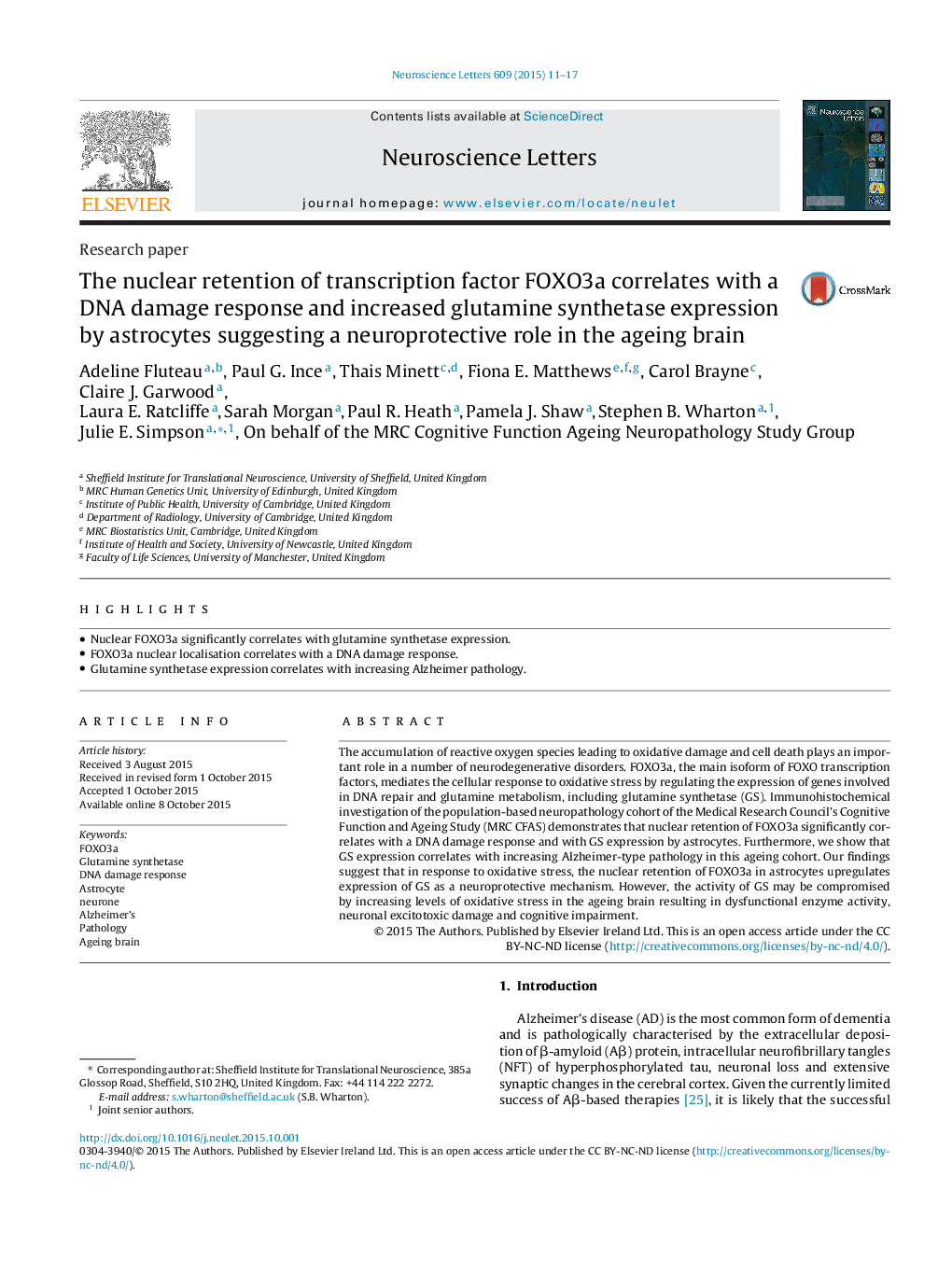| Article ID | Journal | Published Year | Pages | File Type |
|---|---|---|---|---|
| 6280287 | Neuroscience Letters | 2015 | 7 Pages |
â¢Nuclear FOXO3a significantly correlates with glutamine synthetase expression.â¢FOXO3a nuclear localisation correlates with a DNA damage response.â¢Glutamine synthetase expression correlates with increasing Alzheimer pathology.
The accumulation of reactive oxygen species leading to oxidative damage and cell death plays an important role in a number of neurodegenerative disorders. FOXO3a, the main isoform of FOXO transcription factors, mediates the cellular response to oxidative stress by regulating the expression of genes involved in DNA repair and glutamine metabolism, including glutamine synthetase (GS). Immunohistochemical investigation of the population-based neuropathology cohort of the Medical Research Council's Cognitive Function and Ageing Study (MRC CFAS) demonstrates that nuclear retention of FOXO3a significantly correlates with a DNA damage response and with GS expression by astrocytes. Furthermore, we show that GS expression correlates with increasing Alzheimer-type pathology in this ageing cohort. Our findings suggest that in response to oxidative stress, the nuclear retention of FOXO3a in astrocytes upregulates expression of GS as a neuroprotective mechanism. However, the activity of GS may be compromised by increasing levels of oxidative stress in the ageing brain resulting in dysfunctional enzyme activity, neuronal excitotoxic damage and cognitive impairment.
